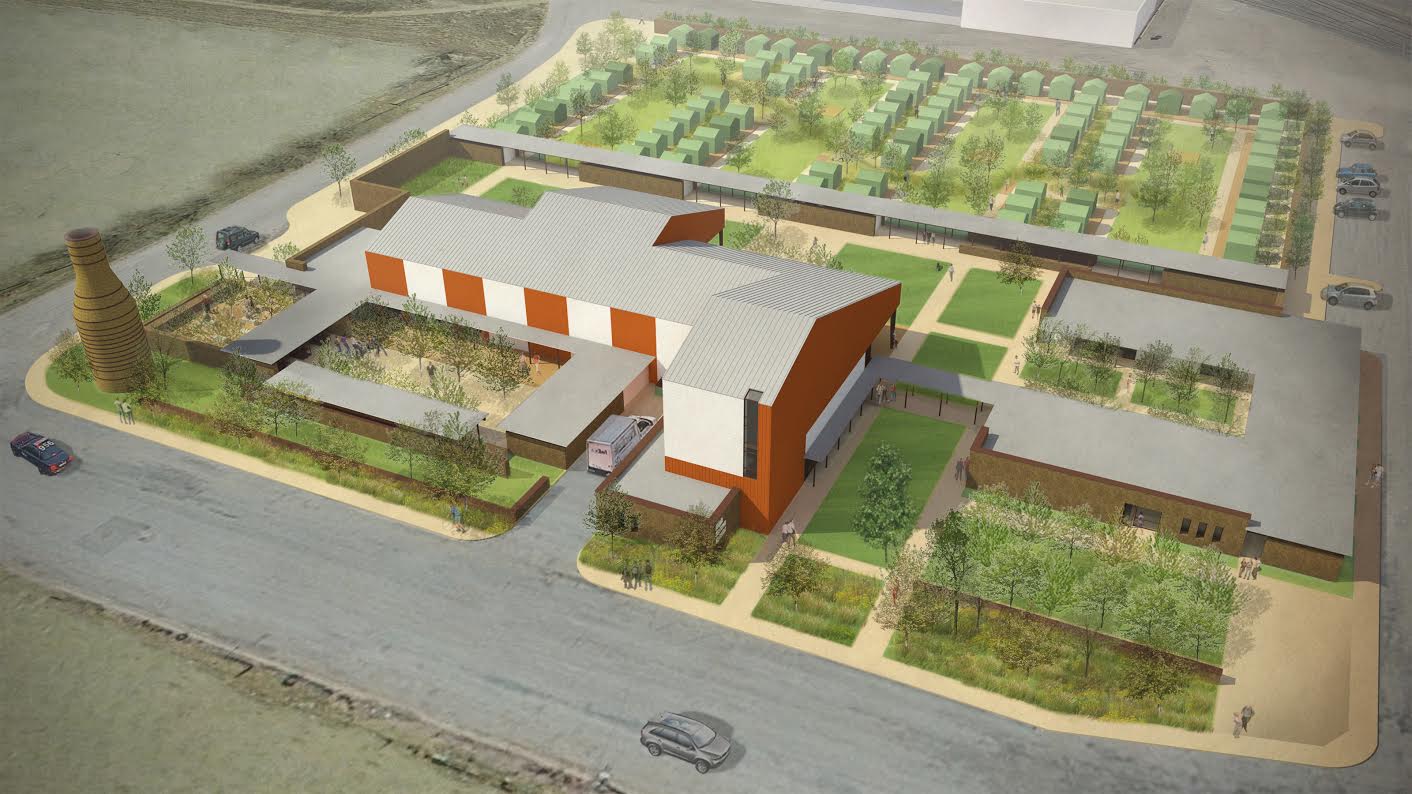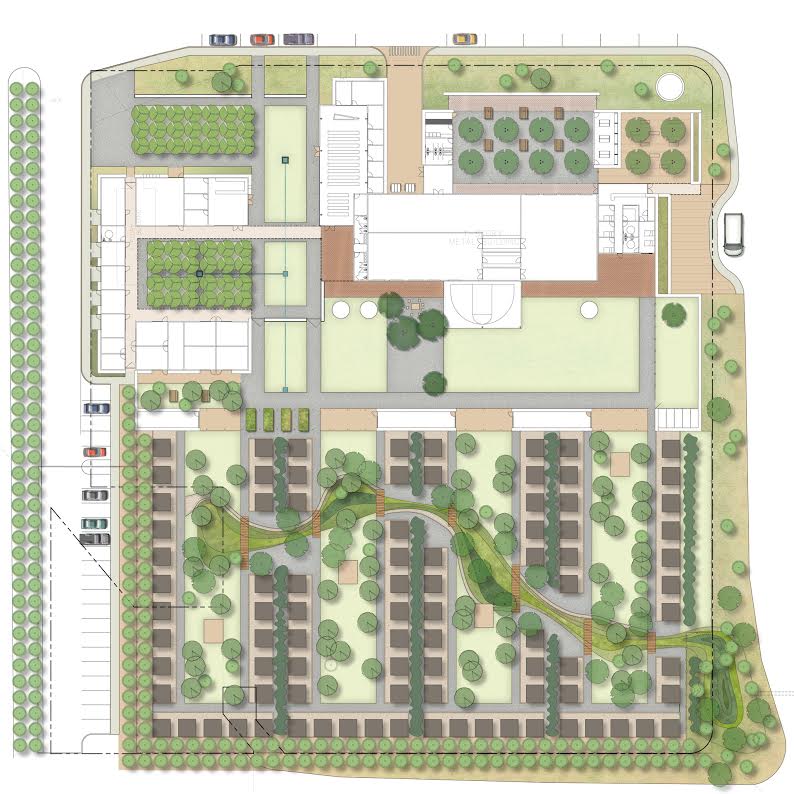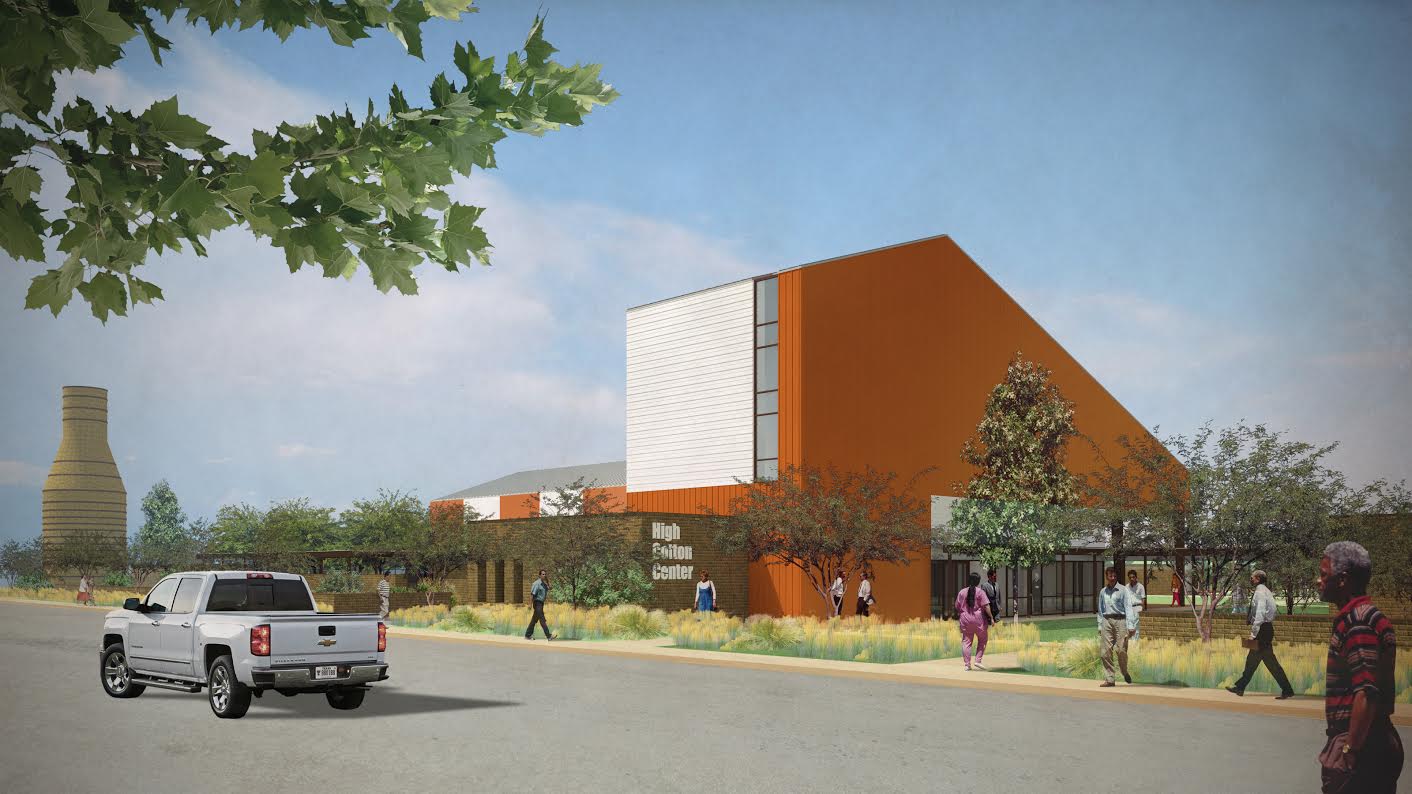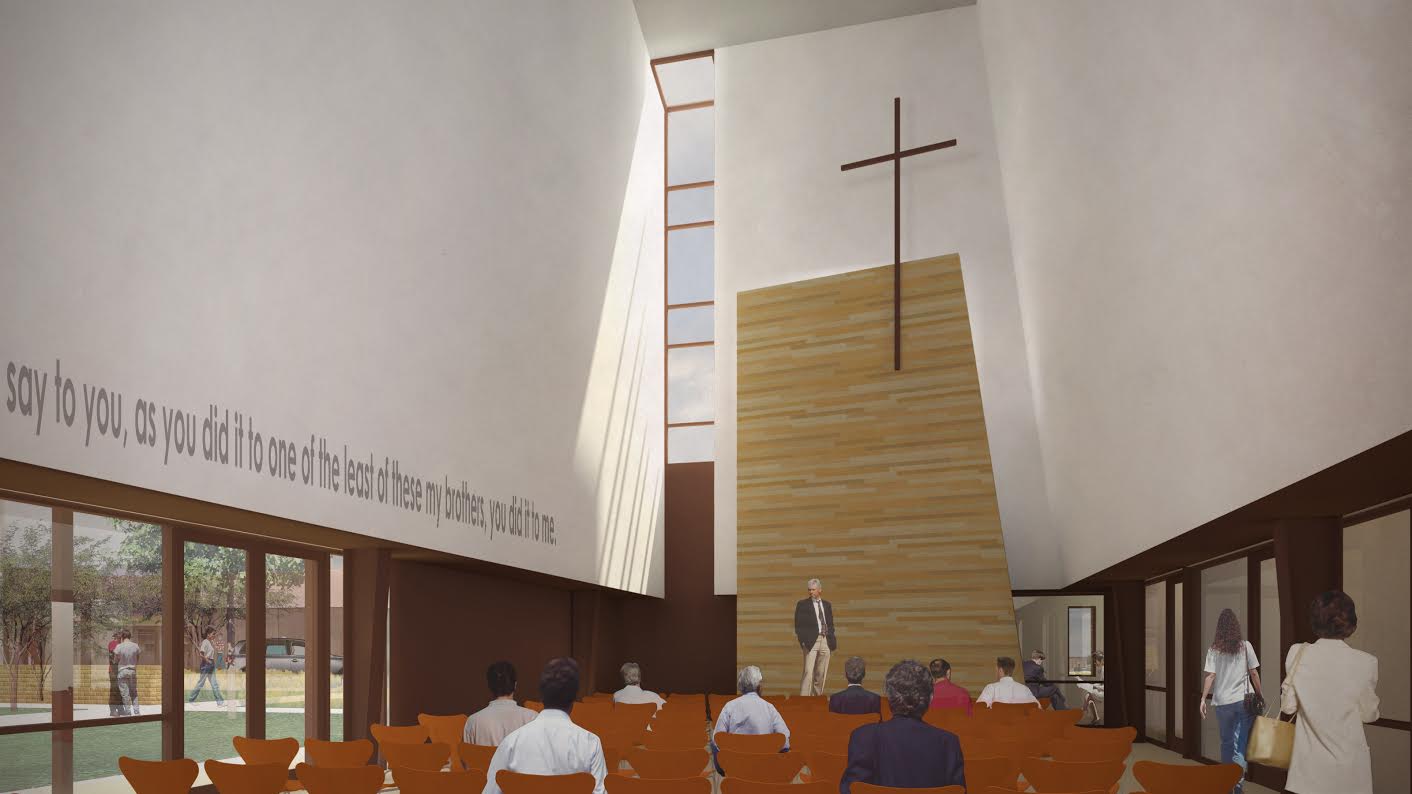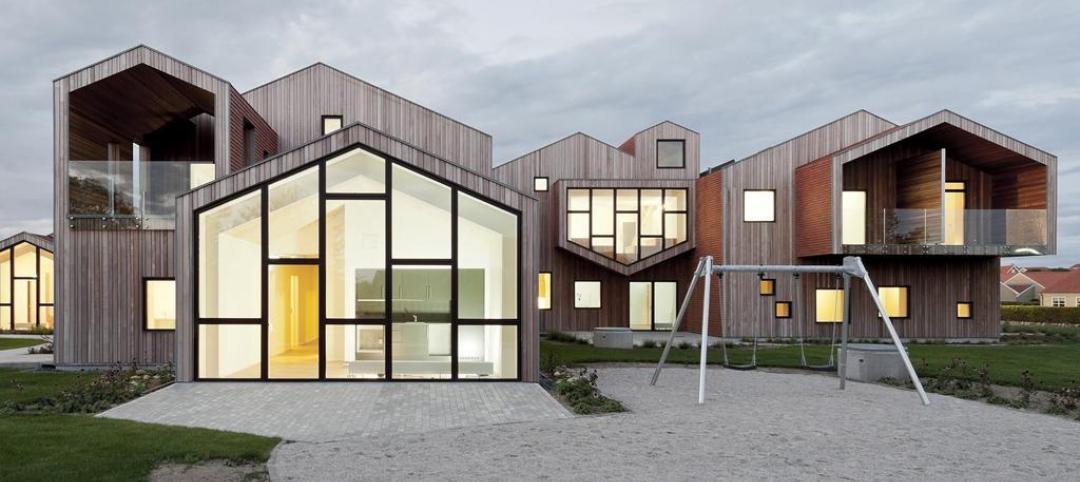Located just east of downtown Lubbock, the High Cotton Genesis center is a unique homeless assistance facility. On the five-acre site of a former cotton gin, the High Cotton program provides temporary shelter for Lubbock's homeless population in the form of a "tent city."
High Cotton is managed by Link Ministries, a faith-based non-profit organization that works to connect those in need with facilities and programs to help them through a difficult part of their lives.
In its three years of existence thus far, High Cotton has grown rapidly both in terms of programming and facilities in order to keep up with steadily increasing demand from Lubbock's homeless population.
Due to a long waiting list for potential residents, Link Ministries has commissioned a design team to propose long term vision for the future of Tent City, both to increase capacity and to expand services within the site.
"Every day I get at least one call from a potential resident that I have to turn down because we're at capacity and have a waiting list. It's a good sign that our services are helping people in the community, but it's also a sign that it's time to grow," said Link Ministries director Les Burrus.
Along with the pressing need for increased capacity at High Cotton, the center also faces logistical and programmatic challenges coming into its fourth year. The facility also needs a space for residents to cook their own meals, a larger laundry facility, more restrooms and showers, and places to socialize and build community.
A chapel is being designed as a core component for not only building the community within High Cotton, but also connecting Tent City residents to the Lubbock Community.
Burrus teamed up with the director of Texas Tech University's Urban Tech Design Studio, David Driskill, to form an advisory group known as the High Cotton Core to lead the design and visioning project. The effort began in January 2012 with an information gathering session attended by many of the organizations serving Lubbock's homeless population.
During the fall of 2012, Lake Flato Architects led a design charrette with the High Cotton community to flesh out a vision for therapeutic facilities serving the local homeless population. This effort, to understand the needs and goals for the Lubbock community, has taken place over the course of two years and is now reaching maturity.
In the fall of 2013, Link Ministries and the High Cotton Core reached out to HiWorks Architecture, Urbanist Design, and Studio Outside Landscape Architects to produce a conceptual and schematic design for the High Cotton site. On a clear November morning, the design team arrived in Lubbock for an initial two-day site visit, including a tour of Tent City, led by Burrus and Driskill, and two design charettes with the Link Ministries Board of Directors, held at Urban Tech's downtown office.
In addition to touring the existing facilities and meeting with various stakeholders, they discussed both the tactical and strategic goals of the project as well as how it might be implemented in a series of phases over time. Hoping to gain a better understand the experience of Tent City residents, one of the architects opted to stay overnight in one of the tents on the site.
After their visit to Lubbock, the designers returned to their home cities to begin the process of translating the experience of the site and the words of the charette participants into a combined design vision for the future of High Cotton Genesis.
In the months that followed, the design team developed a program document that described the specific facilities to be created, as well as a conceptual design of the facility itself, including renderings of the proposed additions.
See the renderings below:
Related Stories
Architects | Feb 11, 2015
Shortlist for 2015 Mies van der Rohe Award announced
Copenhagen, Berlin, and Rotterdam are the cities where most of the shortlisted works have been built.
| Jan 19, 2015
Gaudi’s first work outside Spain will be a chapel in Chile
Nearly 100 years after Antoni Gaudí’s death, Chile will begin constructing a chapel using his designs.
| Jan 9, 2015
Santiago Calatrava talks with BBC about St. Nicholas Church on Ground Zero
Calatrava reveals that he wanted to retain the “tiny home” feel of the original church building that was destroyed with the twin towers on 9/11.
| Jan 2, 2015
Construction put in place enjoyed healthy gains in 2014
Construction consultant FMI foresees—with some caveats—continuing growth in the office, lodging, and manufacturing sectors. But funding uncertainties raise red flags in education and healthcare.
| Dec 28, 2014
AIA course: Enhancing interior comfort while improving overall building efficacy
Providing more comfortable conditions to building occupants has become a top priority in today’s interior designs. This course is worth 1.0 AIA LU/HSW.
| Dec 2, 2014
Nonresidential construction spending rebounds in October
This month's increase in nonresidential construction spending is far more consistent with the anecdotal information floating around the industry, says ABC's Chief Economist Anirban Basu.
| Oct 23, 2014
Santiago Calatrava-designed church breaks ground in Lower Manhattan
Saturday marked the public "ground blessing" ceremony for the Saint Nicholas National Shrine, the Greek Orthodox Church destroyed on 9/11 by the collapse of the World Trade Center towers.
| Oct 16, 2014
Perkins+Will white paper examines alternatives to flame retardant building materials
The white paper includes a list of 193 flame retardants, including 29 discovered in building and household products, 50 found in the indoor environment, and 33 in human blood, milk, and tissues.
| Oct 15, 2014
Harvard launches ‘design-centric’ center for green buildings and cities
The impetus behind Harvard's Center for Green Buildings and Cities is what the design school’s dean, Mohsen Mostafavi, describes as a “rapidly urbanizing global economy,” in which cities are building new structures “on a massive scale.”
| Oct 14, 2014
Proven 6-step approach to treating historic windows
This course provides step-by-step prescriptive advice to architects, engineers, and contractors on when it makes sense to repair or rehabilitate existing windows, and when they should advise their building owner clients to consider replacement.


